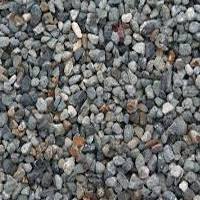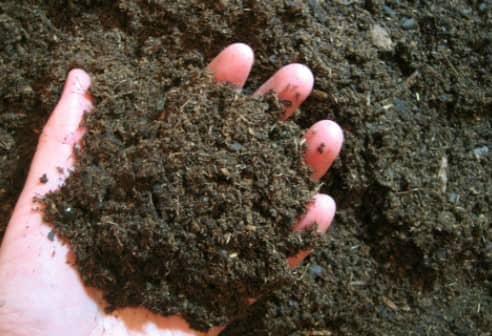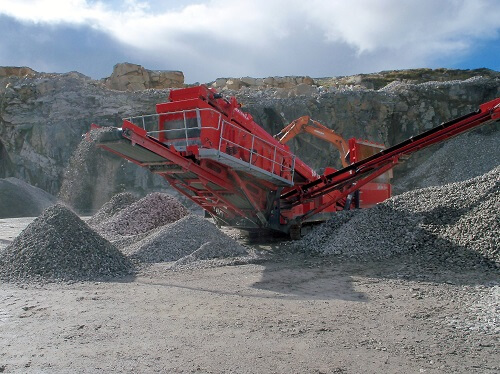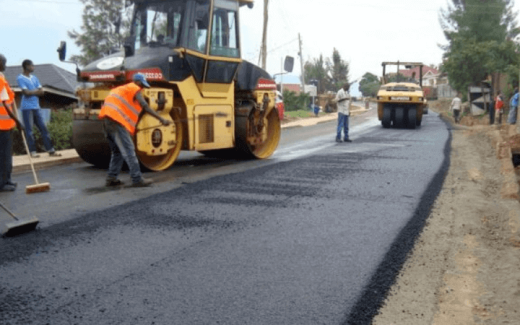Introduction:
WBM is an abbreviation for Water Bound Macadam Road, the most commonly used road construction method for over 100 years. The Water Bound Macadam road is named after Scottish engineer John Loudoun Macadam, who invented and built the WBM road. Water-bound macadam roads have a wearing surface consisting of clean and crushed aggregates that are mechanically interlocked by the rolling Process and bound with each other by the filler material (screening) and water that is laid on the subgrade or base course.

Fig1: WBM Road
Courtesy: vincivilworld.com
What is WBM Road?
The water-bound macadam, abbreviated as WBM, is a type of road named after John Macadam. It comprises raw materials such as clean and crushed aggregates, screening, and binding materials. The aggregates are mechanically interlocked by rolling, and screenings and binding materials are used to fill voids in the aggregates. All of the materials are combined with water.
The mixture of such materials is laid on a well-prepared subgrade, sub-base or existing road pavement. A sub-base, base coarse, or surface course can all be constructed out of water-bound macadam. The thickness of each layer in a WBM road ranges from 7.5 cm to 10 cm. At the formation level of the subgrade and finished surface, the local rainfall is not heavy, a camber of 1 in 48 is offered, and if it is, a camber of 1 in 36 is recommended.
Material Required for WBM Road Construction:
The materials required to build Water Bound Macadam (WBM) roads are as follows:
i) Coarse Aggregate:

Fig2: Coarse Aggregates
Courtesy: vincivilworld.com
Coarse Aggregate comprises hard and durable crushed Aggregate and broken stones. Every Water Bound Macadam Road construction layer should have a well-graded Aggregate.
The coarse aggregates used in constructing WBM roads must have the following characteristics:
- The shape of the coarse Aggregate should be acceptable.
- The coarse Aggregate must be long-lasting.
- It should be tough enough to withstand the strain.
- There should be no flaky or elongated particles in it.
- The Indian Road Congress has specified the physical requirements for coarse aggregates for constructing WBM roads.
- According to the IRC, the Los Angeles abrasion value of coarse Aggregate for the road construction layers of the Sub-base, Base course, and Surface course is 60%, 50%, and 40%, respectively.
- The sub-base, base coarse, and surface course have an aggregate impact value of 50%, 40%, and 30%, respectively.
The coarse aggregates for Macadam road construction layers should be graded as far below the grading table as possible.
| Grading Number | Size Range in mm | Size of Sieve in mm | Percentage by Weight Passing the Sieve |
| 1 | 90 to 40 |
100 80 63 40 100 |
65-85 |
| 2 | 63 to 40 | 80 63 50 40 20 |
100 90-100 35-70 0-15 0-5 |
| 3 | 50 to 20 | 80 63 50 40 20 10 |
100 95-100 35-70 0-10 0-5 |
ii) Binding Materials:
The binding material used in the construction of water macadam roads should be a suitable material approved by the Engineer. The plasticity index of the binding material used in the WBM road should be less than 6. Binding Material Application is not required when the screening, such as moorum or gravel, is crushable

Fig 2: Binding Materials
Courtesy: civiconcept.com
iii) Screening:

Fig 3: Screening of Materials
Courtesy: civillead.com
A screening is a building material used in WBM road construction to fill the void or space left between aggregate particles after compaction. Construction materials used for screening typically have smaller sizes than the coarse Aggregate. The standard grading required for screening for the construction of WBM Road is shown in the table below. IRC has recommended using non-plastic materials such as kankar, murram, or gravel instead of screening to reduce the overall cost of WBM roads.
The grading requirements for screenings for water-bound macadam are listed in the table below.
| Grading | Size of screenings | Sieve size | Percentage By weight passing |
| A | 12.5 mm | 12.5 mm | 100 |
| 10 mm | 90 – 100 | ||
| 4.75 mm | 10 – 30 | ||
| 12.5 mm | 150 microns | ||
| B | 10 mm | 10 mm | 100 |
| 4.75 mm | 85 – 100 | ||
| 150 microns | 10 – 30 |
Construction Procedure of WBM Roads:

Fig4: Construction of WBM Road
Courtesy: civilstring.com
1. Preparation of Foundation for WBM Road:
First, the base course’s subgrade is prepared to the required grade and camber. On the surface of the road, some depressions and potholes are filled. Reshaping the surface to the necessary grade and camber removes the grooves where they are present. Before laying the coarse Aggregate, 50mm wide by 50mm deep furrows are cut at a few meter intervals and 45 degrees to the center line of the carriageway if the existing surface will serve as the WBM road.
2. Lateral Confinement of Aggregates:
The lateral reinforcement or confinement is built before laying different Water Bound Macadam materials. Before the aggregates are laid, the shoulders have a thickness comparable to the WBM road properly compacted layers. It should be built with high-quality murram or earth.
However, if the soil is unstable and the road is at a higher elevation or must be filled, the retaining wall can be built as lateral confinement. The main reason for providing lateral confinement is to keep the road surface built-in in place and to make the lay of coarse aggregates easier.
3. Spreading Coarse Aggregates:
After the shoulders are built, the course aggregates are evenly spread on the prepared base. The pavement design determines the total number of layers and thickness of the WBM road. Generally, a single layer of compacted thickness 75 mm may be adequate for ordinary roads. Two layers of 150 mm compacted thickness may be provided for special roads. If the number 1 grade course aggregate is used, as shown in the above course aggregate grading table, it is compacted to a thickness of 100 mm.
4. Rolling Process:
Rolling is done first along the edges of the road, then for the straight section of the road, it is done in the center. Rolling is completed for super-elevated curves at the lower end of the super-elevation before moving to the high edge. Rolling in Water Bound Macadam Roads is done with vibratory rollers or three-footed power rollers that weigh 6 to 11 tonnes.
Because incorrect rolling operations can result in the formation of grooves, an uneven finish on the road surface or the wearing down of the road after only a few months of construction, skilled operators must be used to operate the roller. Rolling is primarily used to thoroughly fix coarse Aggregate on top of one another.
5. Application of Screening:
Screenings are used to properly fill the voids left after the compaction of aggregates after the rolling operation has been properly completed. Depending on the circumstances at the site, three or more layers of screening may be applied. Each layer of screenings is compacted using dry rollers after being spread evenly. Each layer should be properly broomed after compaction to eliminate the screening material that wasn’t compacted.
6. Sprinkling of Water and Grouting:
The layer is water sprinkled after it has finished wet rolling with screening materials. It is then rolled once more to allow the water to erode the surface more finely and seep into the interior voids. Rolling and watering persisted until the grout wave in front of the roller flushed, filling all gaps. Numerous factors, including aggregate size and type, desired surface type, etc., influence how much water should be sprinkled. Adding another layer of screenings and properly compacting it is also an option if the voids are still visible.
7. Application of Binding Materials:
The binding material is applied slowly and uniformly over the surface of the coarse Aggregate rolled compacted layer. Typically, two or three layers of the binding substance are applied to the road’s surface. The surface is misted with water after each application of the bonding material layer. With the aid of hand brooms, the weight slurry is removed so a mechanical broom can fill the space. Then, a 6 to 10-tonne roller is used to roll the material. The binding material adheres to the roller’s wheels while it is rolling. The binding material is washed off the roller’s wheel using water.
8. Setting and Drying of Surface:
The WBM is allowed to cure for one day following the last rolling operation. If any depressions or undulations are still present the following day, then the appropriate quantity of screenings and binding materials can be spread and compacted. The upper courses of the road can be changed and mixed with bituminous material to keep the WBM road surface from rotting and disintegrating.
9. Preparation of Shoulder:
Shoulders are built alongside the road during the Curing Process by filling the earth to the specified cross slope. They have been properly compacted.
10. Open to Traffic:
The road is prepared for traffic after it has dried properly and is free of depressions. For a few days, traffic should be evenly distributed across the entire road width by strategically placing obstacles in the form of drums, barricades, and so on.
Maintenance of WBM Road:
- Suppose ruts or potholes appear on the newly constructed Water Bound Macadam Road after a certain period. In that case, the responsible authority should replace it with the required material and properly combine it.
- Dragging should be used to remove the unevenness on the constructed road. It may aggravate the situation for the newly constructed roads.
- Any broken construction materials should be replaced with new materials.
- The surface of the constructed road must be renewed every 2-5 years, depending on traffic volume.
- Remove the loose mixture that collects on top of the road surface. The Lavelle road surface should be added, correctly compacted, and watered using new binding material.
Advantages of WBM Road:
- The cost of building a WBM road is relatively low.
- WBM road construction does not necessitate the use of skilled labor.
- If the WBM roads are properly maintained and checked regularly, they can withstand traffic loads of up to 900 tonnes per lane per day.
Disadvantages of WBM Road:
- The cost of maintenance is expensive compared to other types of road construction.
- Water Bound Macadam Road has a shorter overall lifespan.
- WBM road cannot withstand heavy traffic loads.
- Since these roads are permeable to rainwater, this causes yielding and softening of the subsoil.
Conclusion:
Water Bound Macadam Road is a type of flexible pavement in which the base and surface layers contain broken rock pieces or crushed stones, and the materials are interlocked using a roller. The voids are stacked using binding and screening materials near water and compaction. As the population grows, we must improve our WBM roads for greater efficiency in transportation while keeping the future in mind to meet road users’ needs.
References:
1. Tagin, TK. “6 BASIC STEPS COMPRISING WBM ROAD CONSTRUCTION PROCEDURE WBM ROAD CONSTRUCTION PROCEDURE.” (DOC) 6 BASIC STEPS COMPRISING WBM ROAD CONSTRUCTION PROCEDURE WBM ROAD CONSTRUCTION PROCEDURE | TK Tagin – Academia.edu, www.academia.edu/40284205/6_BASIC_STEPS_COMPRISING_WBM_ROAD_CONSTRUCTION_PROCEDURE_WBM_ROAD_CONSTRUCTION_PROCEDURE. Accessed 24 Jan. 2023.
2. “Construction of WBM Road.” Construction of WBM Road, www.ques10.com/p/48432/construction-of-wbm-road. Accessed 24 Jan. 2023.
3. “WBM ROAD CONSTRUCTION.” ONLINE CIVIL ENGINEERING: WBM ROAD CONSTRUCTION, civil-online2010.blogspot.com/2013/06/wbm-road-construction.html. Accessed 24 Jan. 2023.
4. Vicky. “WBM Road?: Construction Procedure, Advantages and Disadvantages.” Civil Engineering Notes, 11 June 2019, civilengineeringnotes.com/wbm-road.
5. Iqbal, Saad. “Water Bound Macadam Road – WBM – Base Course – Specification – Procedure – Definecivil.” Definecivil, 28 May 2022, definecivil.com/water-bound-macadam-road-wbm.
6. Pattekar, Ketan. “Construction of Water Bond Macadam Road.” KPSTRUCTURES, 5 Feb. 2019, www.kpstructures.in/2019/02/construction-of-water-bond-macadam-road.html.
If you have a query, you can ask a question here.



Good